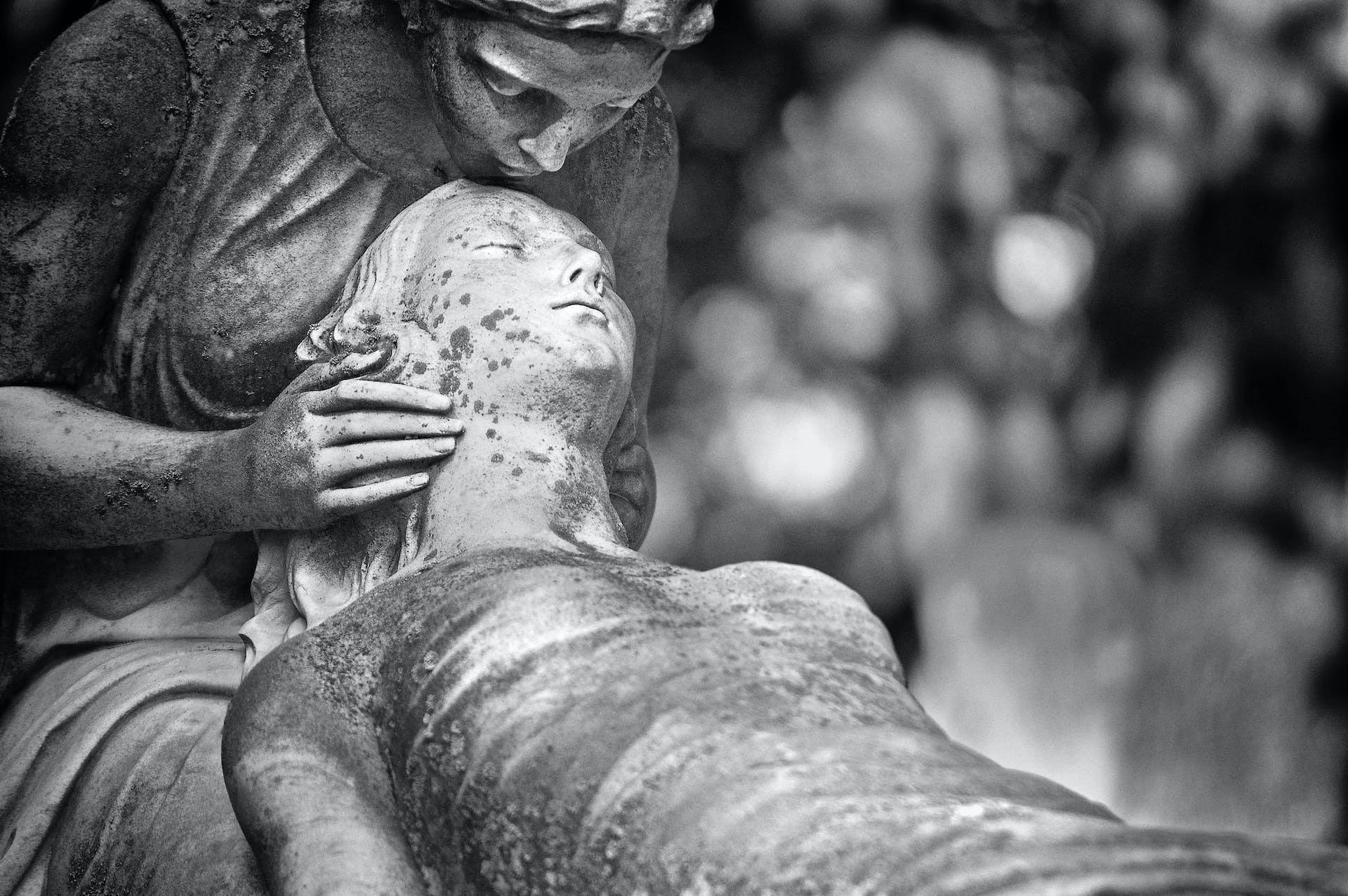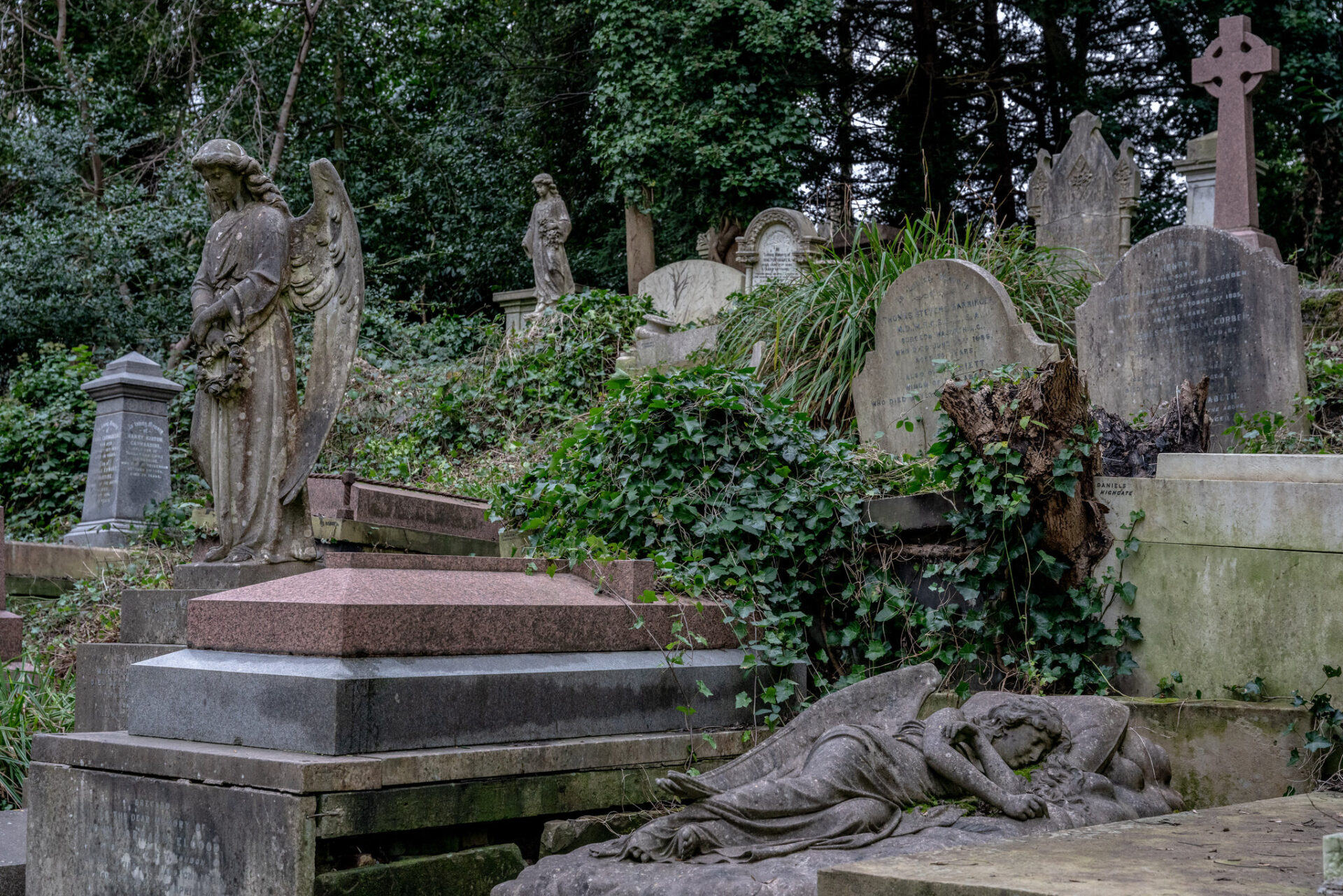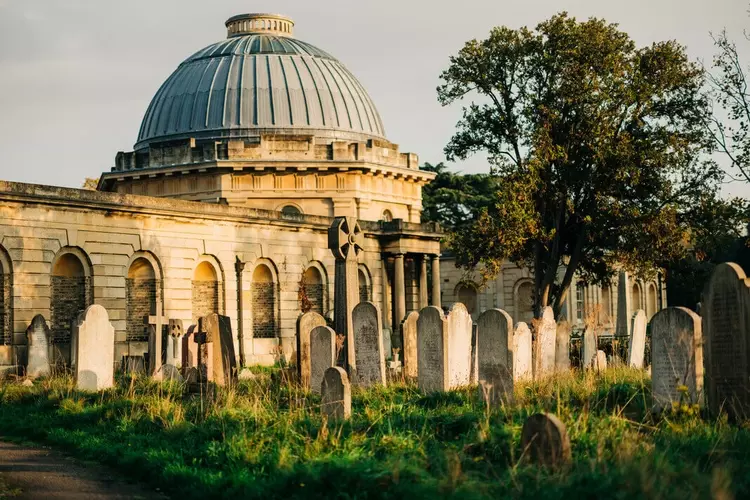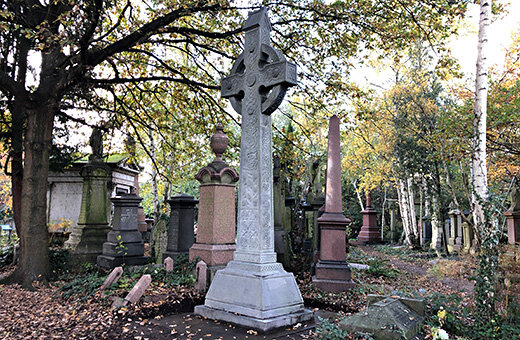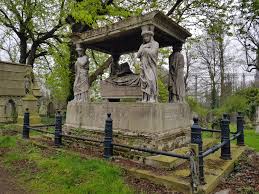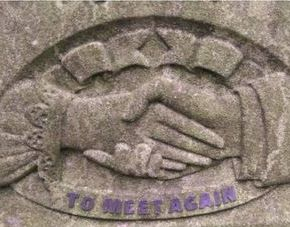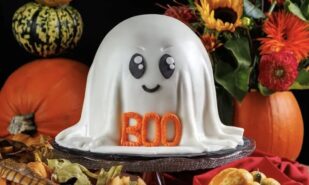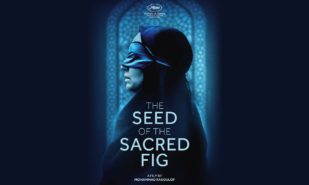The Magnificent Seven are seven Victorian Gothic garden cemeteries, all within a 9-km distance from St Paul’s Cathedral. Different from the traditional resting places in small London churchyards where Londoners had been buried for centuries, these cemeteries truly transformed the image of London.
Meet the Magnificent Seven
In the 1800s the population of London started growing dramatically, reaching 2.4 million people by 1850 (compared to just 1 million in 1800). This meant that the city’s small parish churchyards were becoming dangerously overcrowded, leading to epidemics of diseases such as cholera caused by decaying matter getting into the water around the city. Overcrowding was resulting in frequent instances of body snatching, with bodies left out to rot or not buried deep enough, or cleared from graves too soon.
In 1832 Parliament passed a Bill authorising the establishment of a chain of privately operated garden cemeteries around the outskirts of the metropolis to alleviate the situation with overcrowded city graveyards. Seven cemeteries opened between 1832 and 1841. In 1850 all inner London churchyards and crypts were closed to further burial.
With the exception of Brompton, which had been nationalised, the majority of garden cemeteries were in poor condition by the early 20th century for a variety of reasons. Most of them were no longer economically viable by the 1960s, and the previously beautiful grounds were left to be without any care. The headstones and catacombs were eventually overgrown by bushes and vegetation, turning the locations into woods. They were eventually purchased by the local councils, with volunteer organisations assisting with their maintenance.
In the last twenty years there has been a resurgence of interest in British cemeteries, with local councils owning the grounds coming to understand the significance of these architectural, historical, sociological, and environmental landmarks. To find out which cemeteries make the Magnificent Seven read this article written specifically for Halloween.
1. Highgate Cemetery, Highgate
One of the most well-known cemeteries on Earth is unsurprisingly the first on this list and is a must to visit. Highgate is an enthralling place to explore. The tombs and mausoleums are covered by abundant vegetation, and present the results of unlimited creativity often funeral designers.
Victorian interest in Egyptian culture led to the appearance of many magnificent tombs including the ones making up Egyptian Avenue at the West Cemetery. Instagrammers usually also capture the equally splendid Lebanon Circle. The underground Terrace Catacombs are less stunning but far more eerie, and are rumoured to be haunted by a tall, ominous ghoul with glowing red eyes.
Apart from enjoying these architectural delights, you may also come across the graves of notables, the most well-known of whom is none other than the renowned German philosopher Karl Marx.
You can find Highgate Cemetery at Swain’s Lane, London, N6 6PJ.
2. Brompton Cemetery, Fulham
More than 200,000 people are buried in the Grade I-listed Brompton Cemetery situated close to Kensington. A variety of elaborate memorials with soaring columns and weeping angels are placed on each grave here to honour the departed. The cemetery also serves as the final resting place for two well-known people: Dr. John Snow, whose groundbreaking research proved that cholera was spread by water, and Emmeline Pankhurst, the brave leader of the suffragette movement who campaigned courageously for women’s voting rights.
Not only does this area boast some truly stunning buildings, but it also has a plethora of wildlife and a charming tiny café at its northern end that is ideal for enjoying a cup of tea and a piece of cake after a stroll.
You’ll find Brompton Cemetery at Fulham Road, London, SW10 9UG.
3. Abney Park Cemetery, Stoke Newington
Abney Park, another of London’s Magnificent Seven cemeteries, is a truly beautiful area to take a stroll in. We are talking about strolling through a cemetery, of course. While walking along winding pathways and amidst the thick foliage, you will find some amazing Victorian structures, as well as a charming chapel located in the middle of the park.
As it is also a recognised local wildlife reserve, it is home to a wide variety of animals, including tawny owls, sparrow-hawks, and great spotted woodpeckers. Similar to Brompton, this location is home to 200,000 people who are buried here. Besides, there are many activities such as guided tours and “ghost story walks” organised at Abney Park Cemetery.
You’ll find Abney Park Cemetery at 215 Stoke Newington High Street, London, N16 0LH.
4. Kensal Green Cemetery, Kensal Green
Kensal Green was founded in 1832 and has since been the first garden cemetery in London. The final resting place for hundreds of individuals, including writers, actors, engineers, artists, princes, and paupers, it is also known as the “General Cemetery of All Souls”.
Such writers as Wilkie Collins and William Makepeace Thackeray, as well as the engineer Charles Babbage credited with creating the first automated digital computer are among the well-known figures buried here. In the centre of the cemetery one can find an Anglican Chapel, home to a number of tombs. There is also a creepy catacomb concealed beneath it.
You’ll find Kensal Green Cemetery at Harrow Road, London, W10 4RA.
5. Nunhead Cemetery, Nunhead
Going south along the river to the outskirts of Peckham will take you to Nunhead Cemetery, which is possibly the most beautiful of the Magnificent Seven cemeteries.
The second largest of the seven with its 52 acres, it remained closed since 2001 for a long time until it finally reopened. Of all the cemeteries in London, this one is perhaps the least well-known and also the wildest. The eerie atmosphere is enhanced by the ivy and tree climbers that cover much of its area. This year, the film “An American Werewolf in London” is being shown here. We recommend you to come if you’re looking for a creepy Halloween screening!
You’ll find Nunhead Cemetery at Linden Grove, London, SE15 3LP.
 6. West Norwood Cemetery, West Norwood
6. West Norwood Cemetery, West Norwood
West Norwood Cemetery is another hidden treasure in South London. It has nearly seventy Grade II and Grade II* listed buildings and structures, including a Greek Orthodox necropolis with nineteen listed mausoleums and monuments, catacombs, and a lovely rose garden.
Despite being the smallest of the Magnificent Sevens, spreading on 40 acres, it is still well worth a visit if you are in the area. There are even occasionally guided tours available through the catacombs!
You’ll find West Norwood Cemetery at Norwood Road, Norwood, London, SE27 9JU.
7. Tower Hamlets Cemetery, Bow
Tower Hamlets Cemetery, the final of the Magnificent Seven cemeteries in London, initially became accessible for interments in 1841. And it is indeed a lovely place to be buried at.
The designated area between Stepney Green and Bow offers a diverse system of beautiful trails that will lead you through evocative forests and charming meadows filled with wildflowers. Along with providing an opportunity to see numerous birds, butterflies, and plants uncommon for London, your stroll will also take you past Grade II-listed monuments, graves, and tombs.
You’ll find Tower Hamlets Cemetery at Southern Grove, London, E3 4PX.

